| Main page | Content, Categories & Topics | WikiProjects & Things you can do |
The Baseball Portal
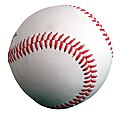
Baseball is a bat-and-ball sport played between two teams of nine players each, taking turns batting and fielding. The game occurs over the course of several plays, with each play generally beginning when a player on the fielding team, called the pitcher, throws a ball that a player on the batting team, called the batter, tries to hit with a bat. The objective of the offensive team (batting team) is to hit the ball into the field of play, away from the other team's players, allowing its players to run the bases, having them advance counter-clockwise around four bases to score what are called "runs". The objective of the defensive team (referred to as the fielding team) is to prevent batters from becoming runners, and to prevent runners advancing around the bases. A run is scored when a runner legally advances around the bases in order and touches home plate (the place where the player started as a batter).
The opposing teams switch back and forth between batting and fielding; the batting team's turn to bat is over once the fielding team records three outs. One turn batting for each team constitutes an inning. A game is usually composed of nine innings, and the team with the greater number of runs at the end of the game wins. Most games end after the ninth inning, but if scores are tied at that point, extra innings are usually played. Baseball has no game clock, though some competitions feature pace-of-play regulations such as the pitch clock to shorten game time.
Baseball evolved from older bat-and-ball games already being played in England by the mid-18th century. This game was brought by immigrants to North America, where the modern version developed. Baseball's American origins, as well as its reputation as a source of escapism during troubled points in American history such as the American Civil War and the Great Depression, have led the sport to receive the moniker of "America's Pastime"; since the late 19th century, it has been unofficially recognized as the national sport of the United States, though in modern times is considered less popular than other sports, such as American football. In addition to North America, baseball spread throughout the rest of the Americas and the Asia–Pacific in the 19th and 20th centuries, and is now considered the most popular sport in parts of Central and South America, the Caribbean, and East Asia, particularly in Japan, South Korea, and Taiwan. (Full article...)
 Featured articles - load new batch
Featured articles - load new batch
-
Image 1
Thurman Lowell Tucker (September 26, 1917 – May 7, 1993) was an American professional baseball player. A center fielder, Tucker played in Major League Baseball for nine seasons in the American League with the Chicago White Sox and Cleveland Indians. In 701 career games, Tucker recorded a batting average of .255 and accumulated 24 triples, nine home runs, and 179 runs batted in (RBI). Due to his resemblance of the film comedian Joe E. Brown, Tucker was nicknamed "Joe E.".
Born and raised in Texas, Tucker first played professionally with the Siloam Springs Travelers. After gradually progressing through minor league baseball, he signed with the Chicago White Sox before the 1941 season. His major league debut came the following year and he spent two years as the White Sox's starting center fielder until he enlisted in the armed forces during World War II. Upon his return, Tucker played two more seasons for the White Sox. Subsequently, he was traded to the Cleveland Indians, for whom he played four years, and continued to play minor league baseball throughout the 1950s. After his retirement, he became a major league scout and insurance agent. (Full article...) -
Image 2
Arthur Joseph Houtteman (August 7, 1927 – May 6, 2003) was an American right-handed pitcher in Major League Baseball who played for 12 seasons in the American League with the Detroit Tigers, Cleveland Indians and Baltimore Orioles. In 325 career games, Houtteman pitched 1,555 innings and posted a win–loss record of 87–91, with 78 complete games, 14 shutouts, and a 4.14 earned run average (ERA).
Known on the sandlot for his pitching motion, Houtteman was signed by scout Wish Egan in 1945 at 17 years of age. He was recruited by major league teams, and joined a Tigers pitching staff that had lost players to injuries and World War II. After moving between the major and minor leagues over the next few years, he was nearly killed in an automobile accident just before the 1949 season. Houtteman rebounded from his injuries and went on to win 15 games that season and made his only All-Star appearance in the following year. (Full article...) -
Image 3William Derrick Bates (born December 7, 1963) is an American former professional baseball second baseman and pinch runner who played in Major League Baseball (MLB) for the Milwaukee Brewers and the Cincinnati Reds. In 29 career games, Bates had a batting average of .125 with six hits, two runs batted in (RBI), 11 runs, and eight stolen bases. Though his defensive position was at second base, the Reds primarily used Bates as a pinch runner. After he scored the winning run in Game 2 of the 1990 World Series, Bates never played in MLB again.
Born in Houston, Bates attended the University of Texas and, in his freshman season, won the 1983 College World Series as a part of the Texas Longhorns baseball team. For the next two seasons, Bates was named to the College Baseball All-America Team, a team composed of the best collegiate baseball athletes in America. Drafted by Milwaukee in the fourth round of the 1985 MLB draft, he rose through the Brewers' farm system helping several of his minor league teams win their respective league titles. He made his MLB debut in 1989, after Milwaukee's starting second baseman Jim Gantner was injured. A trade in 1990 sent Bates to Cincinnati, where the Reds used him primarily as a pinch runner at the end of the regular season and into the postseason. Facing the Oakland Athletics in the World Series, Bates reached base on a pinch hit single against Dennis Eckersley and later scored the winning run in Game 2 as the Reds swept the Athletics four games to none. Following the World Series championship, the Reds re-signed Bates on a one-year contract, and he played for their Triple-A team. He spent the next year with the Chicago Cubs Triple-A affiliate, and last played exhibition baseball in 1995. After retiring, he worked as an equipment supplier in the oil and gas industry in Houston. (Full article...) -
Image 4
Marcus Elmore Baldwin (October 29, 1863 – November 10, 1929), nicknamed "Fido" and "Baldy", was an American professional baseball pitcher who played seven seasons in Major League Baseball (MLB). In 346 career games, he pitched to a 154–165 win–loss record with 295 complete games. Baldwin set the single-season MLB wild pitches record with 83 that still stands today.
Born in Pittsburgh, Pennsylvania, Baldwin made his professional debut for a Cumberland, Maryland, team in 1883. Though signed by Chicago White Stockings president Albert Spalding to pitch against the St. Louis Browns in the 1886 World Series, Baldwin did not play after the Browns objected. He made his MLB debut for the White Stockings in 1887, when a writer for the Oshkosh Daily Northwestern called him the "swiftest pitcher in the National League" (NL). Released by Chicago player–manager Cap Anson, he signed with the Columbus Solons of the American Association (AA) in 1889, where he led the league in innings pitched (513+2⁄3), losses (34), strikeouts (368), and walks (274). (Full article...) -
Image 5Advertisement in Billboard magazine in 1907
How Brown Saw the Baseball Game is an American short silent comedy film produced in 1907 and distributed by the Lubin Manufacturing Company. The film follows a baseball fan named Mr. Brown who overdrinks before a baseball game and becomes so intoxicated that the game appears to him in reverse motion. During production, trick photography was used to achieve this effect. The film was released in November 1907. It received a positive review in a 1908 issue of The Courier-Journal that reported the film was successful and "truly funny". As of 2021, it is unclear whether the print of the film has survived. The identities of the film cast and production crew are unknown. Film historians have noted similarities between the plot of How Brown Saw the Baseball Game and How the Office Boy Saw the Ball Game. It is a comedy film directed by Edwin S. Porter, having released a year before How Brown Saw the Baseball Game. (Full article...) -
Image 6
Robert William Andrew Feller (November 3, 1918 – December 15, 2010), nicknamed "the Heater from Van Meter", "Bullet Bob", and "Rapid Robert", was an American baseball pitcher who played 18 seasons in Major League Baseball (MLB) for the Cleveland Indians between 1936 and 1956. In a career spanning 570 games, Feller pitched 3,827 innings and posted a win–loss record of 266–162, with 279 complete games, 44 shutouts, and a 3.25 earned run average (ERA). His career 2,581 strikeouts were third all-time upon his retirement.
A prodigy who bypassed baseball's minor leagues, Feller made his debut with the Indians at the age of 17. His career was interrupted by four years of military service (1942–1945) as a United States Navy Chief Petty Officer aboard USS Alabama during World War II. Feller became the first pitcher to win 24 games in a season before the age of 21. He threw no-hitters in 1940, 1946, and 1951, and 12 one-hitters, both records at his retirement. He helped the Indians win a World Series title in 1948 and an American League-record 111 wins and the pennant in 1954. Feller led the American League in wins six times and in strikeouts seven times. In 1946 he recorded 348 strikeouts, the most since 1904 and then believed to be a record. (Full article...) -
Image 7
Mariano Rivera (born November 29, 1969) is a Panamanian-American former professional baseball pitcher who played 19 seasons in Major League Baseball (MLB) for the New York Yankees, from 1995 to 2013. Nicknamed "Mo" and "Sandman", he spent most of his career as a relief pitcher and served as the Yankees' closer for 17 seasons. A thirteen-time All-Star and five-time World Series champion, he is MLB's career leader in saves (652) and games finished (952). Rivera won five American League (AL) Rolaids Relief Man Awards and three Delivery Man of the Year Awards, and he finished in the top three in voting for the AL Cy Young Award four times. In 2019, he was inducted into the Baseball Hall of Fame in his first year of eligibility, and is to date the only player ever to be elected unanimously by the Baseball Writers' Association of America (BBWAA).
Raised in the modest Panamanian fishing village of Puerto Caimito, Rivera was an amateur player until he was signed by the Yankees organization in 1990. He debuted in the major leagues in 1995 as a starting pitcher, before permanently converting to a relief pitcher late that year. After a breakthrough season in 1996 as a setup man, he became the Yankees' closer in 1997. In the following seasons, he established himself as one of baseball's top relievers, leading the major leagues in saves in 1999, 2001, and 2004. Rivera primarily threw a sharp-moving, mid-90s mile-per-hour cut fastball that frequently broke hitters' bats and earned a reputation as one of the league's toughest pitches to hit. With his presence at the end of games, signaled by his foreboding entrance song "Enter Sandman", Rivera was a key contributor to the Yankees' dynasty in the late 1990s and early 2000s that won four championships in five years. He was an accomplished postseason performer, winning the 1999 World Series Most Valuable Player (MVP) Award and the 2003 AL Championship Series MVP Award, while setting postseason records that included lowest earned run average (ERA) (0.70) and most saves (42). (Full article...) -
Image 8
Ronald Wilson Reagan (February 6, 1911 – June 5, 2004) was an American politician and actor who served as the 40th president of the United States from 1981 to 1989. He was a member of the Republican Party and became an important figure in the American conservative movement. His presidency is known as the Reagan era.
Born in Illinois, Reagan graduated from Eureka College in 1932 and was hired the next year as a sports broadcaster in Iowa. In 1937, he moved to California where he became a well-known film actor. During his acting career, Reagan was president of the Screen Actors Guild twice, from 1947 to 1952 and from 1959 to 1960. In the 1950s, he hosted General Electric Theater and worked as a motivational speaker for General Electric. Reagan's "A Time for Choosing" speech during the 1964 presidential election launched his rise as a leading conservative figure. After being elected governor of California in 1966, he raised state taxes, turned the state budget deficit into a surplus and implemented harsh crackdowns on university protests. Following his loss to Gerald Ford in the 1976 Republican Party presidential primaries, Reagan won the Republican Party's nomination and then a landslide victory over President Jimmy Carter in the 1980 presidential election. (Full article...) -
Image 9
Albert Benjamin "Happy" Chandler Sr. (July 14, 1898 – June 15, 1991) was an American politician from Kentucky. He represented Kentucky in the U.S. Senate and served as its 44th and 49th governor. Aside from his political positions, he also served as the second commissioner of baseball from 1945 to 1951 and was inducted into the Baseball Hall of Fame in 1982. His grandson, Ben Chandler, later served as congressman for Kentucky's Sixth District.
A multi-sport athlete during his college days at Transylvania College, Chandler briefly considered a career in professional baseball before deciding to pursue a law degree. After graduation, he entered politics and was elected as a Democrat to the Kentucky Senate in 1929. Two years later, he was elected lieutenant governor, serving under Governor Ruby Laffoon. Chandler and Laffoon disagreed on the issue of instituting a state sales tax and when Chandler, the presiding officer in the state senate, worked to block the legislation, Laffoon's allies in the General Assembly stripped him of many of his statutory powers. The tax then passed by a narrow margin. Knowing that Laffoon would try to select his own successor at the Democratic nominating convention, Chandler waited until Laffoon left the state—leaving Chandler as acting governor—and called the legislature into session to enact a mandatory primary election bill. The bill passed, and in the ensuing primary, Chandler defeated Laffoon's choice, Thomas Rhea. He then went on to defeat Republican King Swope by the largest margin of victory for a Kentucky gubernatorial race at that time. As governor, Chandler oversaw the repeal of the sales tax, replacing the lost revenue with new excise taxes and the state's first income tax. He also enacted a major reorganization of state government, realizing significant savings for the state. He used these savings to pay off the state debt and improve the state's education and transportation systems. (Full article...) -
Image 10Los Angeles Angels center fielder Mike Trout hits a home run on a pitch from New York Mets pitcher Tommy Milone on May 21, 2017.
Baseball is a bat-and-ball sport played between two teams of nine players each, taking turns batting and fielding. The game occurs over the course of several plays, with each play generally beginning when a player on the fielding team, called the pitcher, throws a ball that a player on the batting team, called the batter, tries to hit with a bat. The objective of the offensive team (batting team) is to hit the ball into the field of play, away from the other team's players, allowing its players to run the bases, having them advance counter-clockwise around four bases to score what are called "runs". The objective of the defensive team (referred to as the fielding team) is to prevent batters from becoming runners, and to prevent runners advancing around the bases. A run is scored when a runner legally advances around the bases in order and touches home plate (the place where the player started as a batter).
The initial objective of the batting team is to have a player reach first base safely; this generally occurs either when the batter hits the ball and reaches first base before an opponent retrieves the ball and touches the base, or when the pitcher persists in throwing the ball out of the batter's reach. Players on the batting team who reach first base without being called "out" can attempt to advance to subsequent bases as a runner, either immediately or during teammates' turns batting. The fielding team tries to prevent runs by using the ball to get batters or runners "out", which forces them out of the field of play. The pitcher can get the batter out by throwing three pitches which result in strikes, while fielders can get the batter out by catching a batted ball before it touches the ground, and can get a runner out by tagging them with the ball while the runner is not touching a base. (Full article...) -
Image 11Michael Lee Capel (born October 13, 1961) is an American professional baseball pitcher who played in Major League Baseball (MLB) for the Chicago Cubs, the Milwaukee Brewers, and the Houston Astros. In 49 career games, Capel pitched 62+1⁄3 innings, struck out 43 batters, and had a career win–loss record of 3–4 with a 4.62 earned run average (ERA). While he played in MLB, Capel stood at 6 feet 1 inch (185 cm) and weighed 175 pounds (79 kg). A starting pitcher in college and parts of his Minor League Baseball career, he converted to relief pitching while in Chicago's minor league system.
The Philadelphia Phillies chose Capel in the 24th round of the 1980 MLB draft, but the 18-year-old did not sign with the team; instead, he opted to attend the University of Texas. Capel played on the 1982 USA College All-Star Team, which competed in the Amateur World Series in Seoul and placed third. The next year, Capel and the Texas Longhorns won the College World Series. After he was drafted by the Cubs, Capel left Texas and signed to play professional baseball; he played in six seasons of Minor League Baseball before he made his MLB debut in 1988. Capel spent the entire 1989 season in Triple-A, one level below the majors, but the Cubs released him at the end of the year. He agreed to terms with the Brewers and played in MLB after an injury opened a spot on Milwaukee's roster, but was again released at the end of the season. A free agent, the Astros signed Capel, and over the course of the season he pitched in 25 games for the team. He spent the final part of his career in the Astros farm system, and after he made the 1992 Triple-A All-Star team, Capel played his last season in 1993. After retirement, Capel worked as the general manager of a car dealership in Houston, Texas. (Full article...) -
Image 12

Lawrence Winchester Wetherby (January 2, 1908 – March 27, 1994) was an American politician who served as Lieutenant Governor and Governor of Kentucky. He was the first of only two Kentucky governors born in Jefferson County, despite the fact that Louisville (the county seat) is the state's most populous city. The second governor born in Jefferson County is the incumbent governor, Andy Beshear, who grew up in the Lexington area. Two other governors have been elected when residents of Jefferson: Augustus Willson, 1907–11, and Matt Bevin, 2015-19.
After graduating from the University of Louisville, Wetherby held several offices in the Jefferson County judicial system before being elected lieutenant governor in 1947 as the choice of 2nd District U.S. Rep. Earle C. Clements, D-Morganfield, who won the primary for the top job. Wetherby was called Kentucky's first "working" lieutenant governor because Clements had him to carry out duties beyond his constitutional responsibility to preside over the state Senate, such as preparing the state budget and attending the Southern Governors Conference. In 1950, Clements was elected to the U.S. Senate, elevating Wetherby to governor. Wetherby won immediate acclaim by calling a special legislative session to increase funding for education and government benefits from the state's budget surplus. In 1951, campaigning as a "Middletown farmer" in a largely rural state, he won a four-year full term as governor, during which he continued and expanded many of Clements' programs, including increased road construction and industrial diversification. He endorsed the Supreme Court's 1954 desegregation order in the case of Brown v. Board of Education and appointed a biracial commission to oversee the successful integration of the state's schools. As chairman of the Southern Governors Conference in 1954 and 1955, he encouraged other Southern governors to accept and implement desegregation. (Full article...) -
Image 13
Orval Leroy Grove (August 29, 1919 – April 20, 1992) was an American professional baseball pitcher in Major League Baseball who played for ten seasons in the American League with the Chicago White Sox. In 207 career games, Grove pitched 1,176 innings and posted a win–loss record of 63–73, with 66 complete games, 11 shutouts, and a 3.78 earned run average (ERA).
The only freshman on the Proviso Township High School varsity baseball team, Grove's pitching ability attracted the attention of the White Sox. After signing with the team in 1937, Grove moved between the major leagues and minor leagues for a few seasons until 1943, when he found a solid place in the White Sox's pitching rotation. Grove had a career-year in 1943, finishing the season with career-bests in ERA, wins, and complete games; in 1944, he made his only All-Star appearance. (Full article...) -
Image 14Paschal before a game during the 1925 New York Yankees season
Benjamin Edwin Paschal (October 13, 1895 – November 10, 1974) was an American baseball outfielder who played eight seasons in Major League Baseball from 1915 to 1929, mostly for the New York Yankees. After two "cup of coffee" stints with the Cleveland Indians in 1915 and the Boston Red Sox in 1920, Paschal spent most of his career as the fourth outfielder and right-handed pinch hitter of the Yankees' Murderers' Row championship teams of the late 1920s. Paschal is best known for hitting .360 in the 1925 season while standing in for Babe Ruth, who missed the first 40 games with a stomach ailment.
During his time in baseball, Paschal was described as a five-tool player who excelled at running, throwing, fielding, hitting for average, and power. However, his playing time with the Yankees was limited because they already had future Baseball Hall of Famers Ruth and Earle Combs, and star Bob Meusel, in the outfield. Paschal was considered one of the best bench players in baseball during his time with the Yankees, and sportswriters wrote how he would have started for most other teams in the American League. He was one of the best pinch hitters in the game during the period, at a time when the term was still relatively new to baseball. (Full article...) -
Image 15Ross with the Montreal Wanderers, circa 1907–18
Arthur Howey Ross (January 13, 1885 – August 5, 1964) was a Canadian professional ice hockey player and executive from 1905 until 1954. Regarded as one of the best defenders of his era by his peers, he was one of the first to skate with the puck up the ice rather than pass it to a forward. He was on Stanley Cup championship teams twice in a playing career that lasted thirteen seasons; in January 1907 with the Kenora Thistles and 1908 with the Montreal Wanderers. Like other players of the time, Ross played for several different teams and leagues, and is noted for his time with the Wanderers while they were members of the National Hockey Association (NHA) and its successor, the National Hockey League (NHL). In 1911, he led one of the first organized player strikes over increased pay. When the Wanderers' home arena burned down in January 1918, the team ceased operations and Ross retired as a player.
After several years as an on-ice official, he was named head coach of the Hamilton Tigers for one season. When the Boston Bruins were formed in 1924, Ross was hired as the first coach and general manager of the team. He later coached the team on three separate occasions until 1945, and stayed as general manager until his retirement in 1954. Ross helped the Bruins finish first place in the league ten times and win the Stanley Cup three times; Ross personally coached the team to two of those victories. After being hired by the Bruins, Ross, along with his wife and two sons, moved to a suburb of Boston, and he became an American citizen in 1938. He died near Boston in 1964. (Full article...)
General images - load new batch
-
Image 1Cover of Official Base Ball Rules, 1921 edition, used by the American League and National League (from Baseball rules)
-
Image 2A first baseman receives a pickoff throw, as the runner dives back to first base. (from Baseball)
-
Image 3A batter follows through after swinging at a pitched ball. (from Baseball rules)
-
Image 4A New York Yankees batter (Andruw Jones) and a Boston Red Sox catcher at Fenway Park (from Baseball)
-
Image 6In May 2010, the Philadelphia Phillies' Roy Halladay pitched the 20th major league perfect game. That October, he pitched only the second no-hitter in MLB postseason history. (from History of baseball)
-
Image 7The standard fielding positions (from Baseball rules)
-
Image 8A well-worn baseball (from Baseball)
-
Image 9The NL champion New York Giants baseball team, 1913. Fred Merkle, sixth in line, had committed a baserunning gaffe in a crucial 1908 game that became famous as Merkle's Boner. (from History of baseball)
-
Image 10Baserunners generally stand a short distance away from their base between pitches, preparing themselves to either go back or steal the next base. (from Baseball rules)
-
Image 11An Afghan girl playing baseball in August 2002 (from Baseball)
-
Image 12Pitchers are generally substituted during mound visits (team gatherings at the pitcher's mound). (from Baseball rules)
-
Image 13Sadaharu Oh managing the Japan national team in the 2006 World Baseball Classic. Playing for the Central League's Yomiuri Giants (1959–80), Oh set the professional world record for home runs. (from Baseball)
-
Image 15Two players on the baseball team of Tokyo, Japan's Waseda University in 1921 (from Baseball)
-
Image 16Baseball games sometimes end in a walk-off home run, with the batting team usually gathering at home plate to celebrate the scoring of the winning run(s). (from Baseball rules)
-
Image 17The strike zone, which determines the outcome of most pitches, varies in vertical length depending on the batter's typical height while swinging. (from Baseball rules)
-
Image 18Japanese-Americans spectating a World War II-era game while in an internment camp. America's ties to immigrants and to Japan have been deeply shaped by a shared baseball heritage. (from History of baseball)
-
Image 21Sadaharu Oh managing the Japan national team in the 2006 World Baseball Classic. Playing for the Central League's Yomiuri Giants (1959–80), Oh set the professional world record for home runs with 868. (from History of baseball)
-
Image 22The strike zone determines the result of most pitches, and varies in vertical length for each batter. (from Baseball)
-
Image 23The typical motion of a right-handed pitcher (from Baseball rules)
-
Image 25Pesäpallo, a Finnish variation of baseball, was invented by Lauri "Tahko" Pihkala in the 1920s, and after that, it has changed with the times and grown in popularity. Picture of Pesäpallo match in 1958 in Jyväskylä, Finland. (from Baseball)
-
Image 27Alexander Cartwright, father of modern baseball (from History of baseball)
-
Image 28A runner sliding into home plate and scoring. (from Baseball)
-
Image 30Jackie Robinson in 1945, with the era's Kansas City Royals, a barnstorming squad associated with the Negro American League's Kansas City Monarchs (from History of baseball)
-
Image 312013 World Baseball Classic championship match between the Dominican Republic and Puerto Rico, March 20, 2013 (from Baseball)
-
Image 32The American Tobacco Company's line of baseball cards featured shortstop Honus Wagner of the Pittsburgh Pirates from 1909 to 1911. In 2007, the card shown here sold for $2.8 million. (from Baseball)
-
Image 33Diagram indicating the standard layout of positions (from Baseball)
-
Image 34Fenway Park, home of the Boston Red Sox. The Green Monster is visible beyond the playing field on the left. (from Baseball)
-
Image 35Pick-off attempt on runner (in red) at first base (from Baseball rules)
-
Image 36Cy Young—the holder of many major league career marks, including wins and innings pitched, as well as losses—in 1908. MLB's annual awards for the best pitcher in each league are named for Young. (from Baseball)
-
Image 371906 World Series, infielders playing "in" for the expected bunt and the possible play at the plate with the bases loaded (from Baseball rules)
-
Image 38By the 1860s Civil War, baseball (bottom) had overtaken its fellow bat-and-ball sport cricket (top) in popularity within the United States. (from History of baseball)
-
Image 39A pitcher handing off the ball after being taken out of the game during a mound meeting. (from Baseball)
-
Image 40Diagram of a baseball field Diamond may refer to the square area defined by the four bases or to the entire playing field. The dimensions given are for professional and professional-style games. Children often play on smaller fields. (from Baseball)
-
Image 42A game from the Cantigas de Santa Maria, c. 1280, involving tossing a ball, hitting it with a stick and competing with others to catch it (from History of baseball)
-
Image 43Rickey Henderson—the major leagues' all-time leader in runs and stolen bases—stealing third base in a 1988 game (from Baseball)
-
Image 45Jackie Robinson in 1945, with the era's Kansas City Royals, a barnstorming squad associated with the Negro American League's Kansas City Monarchs (from Baseball)
 Good articles - load new batch
Good articles - load new batch
-
Image 1
Dennis Joseph "Dan" Brouthers (/ˈbruːθərz/; May 8, 1858 – August 2, 1932) was an American first baseman in Major League Baseball whose career spanned the period from 1879 to 1896, with a brief return in 1904. Nicknamed "Big Dan" for his size, he was 6 feet 2 inches (1.88 m) and weighed 207 pounds (94 kg), which was large by 19th-century standards.
Recognized as the first great slugger in baseball history, and among the greatest sluggers of his era, he briefly held the career home run record from 1887 to 1889, with his final total of 106 tying for the fourth most of the 19th century. His career slugging percentage of .520 remained the Major League record until Babe Ruth overtook him in the 1920s. At the time of his initial retirement, he also ranked second in career triples (205), and third in runs batted in (1,296) and hits. (Full article...) -
Image 2
Alfred Stanley Benjamin (May 20, 1914 – December 24, 2009) was a right fielder in Major League Baseball for five seasons; four with the Philadelphia Phillies (1939–42), of the National League (NL), and one with the Cleveland Indians (1945), of the American League (AL). The 6 ft 2 in (1.88 m), 194 lb (88 kg) Benjamin batted and threw right-handed, and was born in Framingham, Massachusetts. After graduating from high school, he attended Western Maryland College, now known as McDaniel College, where he played baseball, basketball, and football.
In addition to his major league playing career, he played in minor league baseball for ten seasons. He began at the age of 23, with the Thomasville Orioles of the Georgia–Florida League in 1937, and finished as the player-manager for the Fresno Cardinals of the California League in 1948. During that time, he played in 955 minor league games, and batted .304, and hit 52 home runs. In the early 1940s, he was an assistant football coach at Northeastern University. Later, during his minor league career, he began coaching high school football, part-time, in his home town of Framingham, and then full-time once his playing and managing career ended. (Full article...) -
Image 3The 2013 American League Wild Card tie-breaker game was a one-game extension to Major League Baseball's (MLB) 2013 regular season, played between the Texas Rangers and Tampa Bay Rays to determine the second participant in the 2013 American League (AL) Wild Card Game. It was played at the Globe Life Park in Arlington on September 30, 2013. The Rays defeated the Rangers, 5–2, and advanced to the AL Wild Card Game against the Cleveland Indians at Progressive Field, which they won 4–0; the Rangers failed to qualify for the postseason.
The tie-breaker game was necessary after both teams finished the season with win–loss records of 91–71 and thus tied for the second Wild Card position in the AL. The Rangers were awarded home field for the game, as they won the regular season series against the Rays, 4–3. The game was televised on TBS. It was the fourth tie-breaker in MLB history for a Wild Card spot, although it was the first when MLB used the format of two Wild Card teams playing in a Wild Card Game from 2012 to 2021. The tie-breaker counted as the 163rd regular season game for both teams, with all events in the game added to regular season statistics. (Full article...) -
Image 4
Eric Lynn Hacker (born March 26, 1983) is an American former professional baseball pitcher. Hacker stands 6 feet 1 inch (1.85 m) and weighs 230 pounds (100 kg). He throws right-handed but is a switch hitter. He played in Major League Baseball (MLB) for the Pittsburgh Pirates, Minnesota Twins, and San Francisco Giants, and in the KBO League for the NC Dinos and Nexen Heroes. He throws a fastball, a slider, a curveball, and a changeup.
Hacker was drafted out of Duncanville High School by the New York Yankees in 2002. He pitched in their minor league system from 2002 to 2009 (missing 2004 and 2006 with injuries) before getting traded to the Pirates. He made his major league debut with Pittsburgh on September 22, 2009, and pitched in three games for them that season. He signed with the Giants in the offseason and spent the entire 2010 season in the minor leagues. In 2011, he signed with the Twins and appeared in two games with them. He signed with San Francisco in 2012 and made his first career start in the majors, recording a loss. He also pitched three games in relief for the Giants that year. (Full article...) -
Image 5

Donald Lee Blasingame (March 16, 1932 – April 13, 2005), nicknamed "Blazer", was an American professional baseball second baseman. He played in Major League Baseball (MLB) for the St. Louis Cardinals (1955–1959), San Francisco Giants (1960–1961), Cincinnati Reds (1961–1963), Washington Senators (1963–1966), and Kansas City Athletics (1966). Blasingame threw right-handed, batted left-handed and was listed as 5 feet 10 inches (1.78 m) tall and 160 pounds (73 kg).
Born and raised in Corinth, Mississippi, Blasingame signed with the Cardinals in 1953 after a stint in the United States Army. He made his debut for the team in September 1955 and took over the second base job from Red Schoendienst in 1956. In 1957, he finished twelfth in National League Most Valuable Player Award voting, and he reached his only All-Star Game in 1958. He played one more season for the Cardinals in 1959 before getting traded to the Giants. With San Francisco, Blasingame's batting average was significantly lower than it had been with St. Louis, and he lost the second base job in 1961, then was traded early in the season to the Reds. He made it to the World Series with the Reds during his first year and batted .281 for them in 1962. In 1963, he lost the second base role to Pete Rose and was traded to the Senators midseason. Blasingame served as Washington's second baseman until 1966, platooned with Chuck Cottier for the first half of that year, then went to the Athletics and spent a month with them as a pinch hitter to finish his major league career. (Full article...) -
Image 6
Robert Lynn Bomar (January 21, 1901 – June 11, 1964) was an American football end in the National Football League (NFL). Bomar played college football, basketball and baseball for Vanderbilt University, following coach Wallace Wade and classmate Hek Wakefield there from prep school, and was a unanimous 1922 All-Southern selection and a consensus 1923 All-American selection in football. The latter season included a first-team All-American selection by Walter Camp, rare for a player in the South. A paralyzing injury ended Bomar's college career, but he quickly recovered and sat on the bench for all of his team's games. He played for the New York Giants in 1925 and 1926, retiring abruptly after a separate injury. Bomar was nicknamed "the Blonde Bear".
He had a later career in law enforcement. In his position as Tennessee's Commissioner of Public Safety and Patrol chief, Bomar supervised the ransacking of black households during the 1946 Columbia race riot. He was the warden of Tennessee State Prison from 1955 until his death, and oversaw several executions. In 1956, Bomar was the first Vanderbilt football player elected to the College Football Hall of Fame. (Full article...) -
Image 7

Lester Elmer Webber (May 6, 1915 – November 13, 1986) was an American Major League Baseball right-handed pitcher who played for six seasons. He played for the Brooklyn Dodgers from 1942 to 1946 and the Cleveland Indians in 1946 and 1948. In 154 career games, Webber pitched 432 innings and had 23 wins, 19 losses, and a 4.19 earned run average (ERA).
Born in California, Webber began his professional career in Seattle in 1936, and spent the next six years in the minor leagues. He officially joined the Dodgers in 1942, and remained with them through the war years. He was primarily a relief pitcher for the Dodgers, and led the league in saves in 1943. The Dodgers attempted to make him a starting pitcher in 1945, but after World War II ended that year Webber became expendable. He was sent to the Indians, appearing in a handful of games for the team in 1946 and one in 1948. After two more seasons in the minors, he retired from professional play, turning to semi-pro baseball. He became a real estate broker after retiring from baseball, and died in 1986. (Full article...) -
Image 8
Glenn Scobey Warner (April 5, 1871 – September 7, 1954), most commonly known as Pop Warner, was an American college football coach at various institutions who is responsible for several key aspects of the modern game. Included among his innovations are the single and double wing formations (precursors of the modern spread and shotgun formations), the three point stance and the body blocking technique. Fellow pioneer coach Amos Alonzo Stagg called Warner "one of the excellent creators". He was inducted as a coach into the College Football Hall of Fame as part of its inaugural class in 1951. He also contributed to a junior football program which became known as Pop Warner Little Scholars, a popular youth American football organization.
In the early 1900s, he created a premier football program at the Carlisle Indian Industrial School—a federally-funded, off-reservation American Indian boarding school. He also coached teams to four national championships: Pittsburgh in 1915, 1916, and 1918 and Stanford in 1926. In all, he was head coach at the University of Georgia (1895–1896), Iowa Agricultural College and Model Farm (1895–1899), Cornell University (1897–1898 and 1904–1906), Carlisle (1899–1903 and 1907–1914), Pittsburgh (1915–1923), Stanford (1924–1932) and Temple University (1933–1938), compiling a career college football record of 319–106–32. Predating Bear Bryant, Eddie Robinson, and Joe Paterno, he once had the most wins of any coach in college football history. (Full article...) -
Image 9"A Hero Sits Next Door" is the fifth episode in the first season of the American animated television series Family Guy. It originally aired on the Fox network in the United States on May 2, 1999. The episode features the introduction of Joe Swanson, who would become a main character in the series. Peter Griffin must find a replacement player for an upcoming softball game. Peter eventually convinces Joe to play for the team after learning that he played baseball in college. When Joe shows up the following morning, Peter realizes that Joe is in a wheelchair. Joe turns out to be a great player, and the team wins the game. Peter becomes jealous of Joe and tries to become a hero. In a subplot, Meg Griffin tries to get Joe's son Kevin to notice her.
"A Hero Sits Next Door" was directed by Monte Young and written by the writing team of Mike Barker and Matt Weitzman. It featured guest performances by actress Suzie Plakson, figure skater Michelle Kwan, as well as actors Wally Wingert and Carlos Alazraqui. Much of the episode features a cutaway style of humor that is typically used in Family Guy, many of which feature cultural references and include Super Friends, Pez, Teletubbies, and the assassinations of John F. Kennedy and Robert F. Kennedy. (Full article...) -
Image 10Norman Clifford Louis O'Neill OAM (19 February 1937 – 3 March 2008) was a cricketer who played for New South Wales and Australia. A right-handed batsman known for his back foot strokeplay, O'Neill made his state debut aged 18, before progressing to Test selection aged 21 in late 1958. Early in his career, O'Neill was one of the foremost batsmen in the Australian team, scoring three Test centuries and topping the run-scoring aggregates on a 1959–60 tour of the Indian subcontinent which helped Australia win its last Test and series on Pakistani soil for 39 years, as well as another series in India. His career peaked in 1960–61 when he scored 181 in the Tied Test against the West Indies, and at the end of the series, had a career average of 58.25.
O'Neill's performances on the 1961 tour of England saw him named as one of the Wisden Cricketers of the Year. Thereafter his form was less formidable, characterised by nervousness and fidgeting at the start of his innings. Persistent knee problems, as well as a controversial media attack on the legality of West Indian bowler Charlie Griffith, saw him dropped from the Australian team after 1965. O'Neill also bowled occasional leg spin and was regarded as one of the finest fielders of his era. He later became a cricket commentator and his son Mark O'Neill also played cricket at state level. (Full article...) -
Image 11Fernández with the Miami Marlins in 2016
José Delfín Fernández Gómez (July 31, 1992 – September 25, 2016) was a Cuban-born American professional baseball right-handed pitcher who played four seasons in Major League Baseball (MLB). He was a member of the Miami Marlins from 2013 until his death in 2016. He stood 6 feet 3 inches (1.91 m) tall and weighed 243 pounds (110 kg) during his playing career. He was affectionately known as "Niño" to his teammates and fans due to the youthful exuberance with which he played the game.
Fernández was born in Santa Clara, Cuba. He made three unsuccessful attempts at defecting to the United States before he finally succeeded in 2008. He enrolled at Braulio Alonso High School in Tampa, Florida, and was selected by the Marlins in the first round of the 2011 MLB draft. Fernández made his MLB debut with the Marlins on April 7, 2013. He was named to the 2013 National League All-Star Team, and won the National League (NL) Rookie of the Month Award in July and August. After the season, he won the NL Rookie of the Year Award and finished third in Cy Young Award balloting. He underwent Tommy John surgery during the 2014 season and was named to his second All-Star Game in 2016. (Full article...) -
Image 12Harry Edmund Bolick Jr. (October 29, 1912 – November 21, 1999) was an American athlete and sports coach. He played several sports at Presbyterian, and was best known for football: he was team captain and won the Jacobs Blocking Trophy in 1934. Bolick later coached several high schools in the area, as well as for one year the athletics at Erskine College. (Full article...)
-
Image 13James F. Mueller (May 23, 1943 – August 17, 2022) was an American sportscaster. He was a radio announcer for the Cleveland Browns of the National Football League (NFL) from 1975 to 1995, and was a sports anchor on Cleveland TV newscasts through most of the 1970s and 1980s. (Full article...)
-
Image 14Leon Day (October 30, 1916 – March 13, 1995) was an American professional baseball pitcher who spent the majority of his career in the Negro leagues. Recognized as one of the most versatile athletes in the league during his prime, Day could play every position, with the exception of catcher, and often was the starting second baseman or center fielder when he was not on the mound. A right-handed pitcher with a trademark no wind-up delivery, Day excelled at striking batters out, especially with his high-speed fastball. At the same time, he was an above-average contact hitter, which, combined with his effectiveness as a baserunner and his tenacious fielding, helped cement Day as one of the most dynamic players of the era.
Debuting in the Negro leagues in 1934, Day played with the Baltimore Black Sox, Newark Eagles, and Baltimore Elite Giants during his career. In 1937, Day had the best season of his career as a member of the Eagles, finishing with a perfect record of 13–0 and a batting average over .300. Day also played Puerto Rican winter ball in the offseasons. He holds both the Negro and Puerto Rican league records for strikeouts in a game, and appeared in the most East–West All-Star Games. (Full article...) -
Image 15Ball at an old-timers' game in 1921
Cornelius "Neal" Ball (April 22, 1881 – October 15, 1957) was an American baseball shortstop who played seven seasons in Major League Baseball (MLB). He played for the New York Highlanders, Cleveland Naps, and Boston Red Sox from 1907 to 1913. Although his primary position was shortstop, Ball played at second base, third base, and in the outfield as well. He is the first player to turn an unassisted triple play in Major League Baseball history on July 19, 1909.
Ball played minor league baseball for the Montgomery Senators of the Southern League until 1907, when he signed for the New York Highlanders. After spending less than three seasons with the organization, Ball was sold to the Cleveland Naps, where he spent the next two seasons. In the middle of the 1912 season, his contract was then purchased by the Boston Red Sox, with whom he played his last game on June 30, 1913. He died on October 15, 1957, in Bridgeport, Connecticut. (Full article...)
Did you know (auto-generated) - load new batch

- ... that in the 1932 baseball game in which pitcher Eddie Rommel won his last game, he pitched 17 innings in relief, an American League record?
- ... that baseball player Dwight Smith recorded a demo rhythm and blues album during the 1993–94 offseason?
- ... that Milt Wilcox, winning pitcher of Game 3 of the 1984 World Series, credited "throwing bowling balls" with rescuing his Major League Baseball career?
- ... that Helene Hathaway Britton, the first woman to own a Major League Baseball team, was unsuccessfully pressured by other club owners to sell the team?
- ... that getting bitten by an eel led Sean Barber to become an umpire?
- ... that Zack Kelly received a $500 signing bonus, lost money in his first professional seasons, and was released by two organizations before he made his Major League Baseball debut?
- ... that Mike Veeck's baseball promotions include Disco Demolition Night, a game with no fans, and the world's largest pillow fight?
- ... that Bill Duplissea has been said to have the "best eyes in baseball"?
Quotes
| Hating the [New York] Yankees is as American as pizza pie, unwed mothers, and cheating on your income tax. |
 Featured lists - load new batch
Featured lists - load new batch
-
Image 1

Joe Quinn, the first Australian to play in MLB
The first recorded baseball event in Australia took place in Melbourne, Victoria in 1857, between teams from Collingwood and Richmond. Accounts vary as to the details, including whether it was a single game or a series of three games, though details in common include a score of 350–230 in favour of Collingwood, and that the rules used were some form of hybrid between cricket and baseball, with teams batting until all players were out, and runs being scored for every base crossed, rather than just for reaching home plate. Though there are no records to confirm it, the commonly held belief is that baseball in Australia originated on the Ballarat gold-fields among American miners. The Claxton Shield, the first annually recurring national tournament, commenced in 1934. Though the tournament itself has been supplanted at various points in its history, the physical Shield is still awarded to the national champions in the Australian Baseball League.
As of the 2024 Major League Baseball (MLB) season, 38 Australians have played in at least one MLB game. Of those players, 33 were born in Australia, the remainder having been born elsewhere but raised in Australia and have played for the Australia national baseball team at International Baseball Federation or sanctioned tournaments such as the Olympic Games and World Baseball Classic. 25 of the players have been pitchers and the other 13 have been position players. (Full article...) -
Image 2

The 1901 Nashville Baseball Club won the first Southern Association pennant.
The Nashville Vols were a Minor League Baseball team that played in Nashville, Tennessee, from 1901 to 1963. They were established as charter members of the Southern Association in 1901. Known as the Nashville Baseball Club during their first seven seasons, they became the Nashville Volunteers (regularly shortened to Vols) in 1908. Nashville remained in the Southern Association until the circuit disbanded after the 1961 season. The team sat out the 1962 campaign but returned for a final season in the South Atlantic League in 1963 before ceasing operations altogether. Over 62 seasons, 1,222 players competed in at least one game for the Vols. Of those, 567 also played in at least one game for a Major League Baseball team. Seventeen player-managers served in the role of manager concurrent with their on-field playing.
The Southern Association, of which the Volunteers were members for the entirety of its 61-season run, operated at the Class B (1901), Class A (1902–1935), Class A1 (1936–1945), and Double-A (1946–1961) levels of the minors. The South Atlantic League was at the Double-A level during Nashville's only year of membership. In 35 seasons, the Vols were not affiliated with any Major League Baseball team. Across 27 seasons, they served as a farm club for six major league franchises: the New York Giants (1934–1935, 1952–1954), Cincinnati Reds (1936–1937, 1955–1960), Brooklyn Dodgers (1938–1940), Chicago Cubs (1943–1951), Minnesota Twins (1961), and Los Angeles Angels (1963). The Vols typically owned the majority of their players, and these major league clubs furnished Nashville with additional players to round out the roster. (Full article...) -
Image 3In its 124-year history, the Baltimore Orioles baseball franchise of Major League Baseball's American League has employed 42 managers. The duties of the team manager include team strategy and leadership on and off the field. Of those 42 managers, 12 have been "player-managers"; specifically, they managed the team while still being signed as a player. Since 1992, the team has played its home games at Oriole Park at Camden Yards.
The Baltimore franchise began operations in Milwaukee, Wisconsin, as the Brewers (not to be confused with the current National League team of the same name) in 1901. After one season in Wisconsin under manager and Hall of Famer Hugh Duffy, the franchise moved south to St. Louis, Missouri, adopting the St. Louis Browns name and hiring a new manager, Jimmy McAleer. The Browns remained in Missouri until the end of the 1953 season, when Major League Baseball's owners elected to move the franchise to Baltimore, Maryland, where they were renamed the Orioles, after Maryland's state bird. (Full article...) -
Image 4
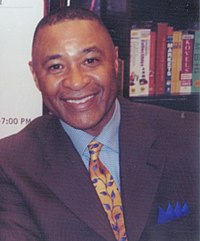
Ozzie Smith has won 13 Gold Glove Awards at shortstop, tying him for the third-highest total among winners at all positions.
The Rawlings Gold Glove Award, usually referred to as the Gold Glove, is the award given annually to the Major League Baseball players judged to have exhibited superior individual fielding performances at each fielding position in both the National League (NL) and the American League (AL), as voted by the managers and coaches in each league. Managers are not permitted to vote for their own players. Eighteen Gold Gloves are awarded each year (with the exception of 1957, 1985, 2007, and 2018), one at each of the nine positions in each league. In 1957, the baseball glove manufacturer Rawlings created the Gold Glove Award to commemorate the best fielding performance at each position. The award was created from a glove made from gold lamé-tanned leather and affixed to a walnut base. Initially, only one Gold Glove per position was awarded to the top fielder at each position in the entire league; however, separate awards were given for the National and American Leagues beginning in 1958.
Ozzie Smith, known as "the Wizard of Oz", has won the most Gold Glove Awards at shortstop; he captured 13 awards in his 19 seasons with the St. Louis Cardinals. Omar Vizquel is second among shortstops with 11 wins; he won two with the San Francisco Giants in the National League after winning nine with the Seattle Mariners and the Cleveland Indians in the American League. Luis Aparicio won nine times at shortstop for the third-highest total, followed by Mark Belanger with eight wins. Dave Concepción and Derek Jeter have won five awards; four-time winners at shortstop include Brandon Crawford, Tony Fernández, Jimmy Rollins, Andrelton Simmons and Alan Trammell. Hall of Famers who have won Gold Glove Awards at shortstop include Smith, Aparicio, Trammell, Ernie Banks, Robin Yount, Barry Larkin and Cal Ripken Jr., whose 2,632 consecutive games played earned him his "Iron Man" nickname. (Full article...) -
Image 5

Tim Dillard is the Sounds' career leader in wins (48), games pitched (242), innings pitched (710), and strikeouts (437).
The Nashville Sounds Minor League Baseball team has played in Nashville, Tennessee, since being established in 1978 as an expansion team of the Double-A Southern League. They moved up to Triple-A in 1985 as members of the American Association before joining the Pacific Coast League in 1998. The team was placed in the Triple-A East in 2021 prior to this becoming the International League in 2022. In the history of the franchise, numerous players and teams have set records in various statistical areas during single games, entire seasons, or their Sounds careers.
Of the nine Sounds who hold the 19 career records tracked by the team, Tim Dillard holds the most, with seven. He is followed by Skeeter Barnes and Chad Hermansen, with three each; and Keith Brown, Mark Corey, Hugh Kemp, Otis Nixon, Tike Redman, and Joey Wendle, with one apiece. Dillard holds the most franchise records, with eight. He is followed by Jamie Werly, with six; and Steve Balboni and Skeeter Barnes, who hold four records each. (Full article...) -
Image 6The Washington Nationals are an American professional baseball franchise based in Washington, D.C. They are members of the National League (NL) East Division in Major League Baseball (MLB). The team began playing in 1969 as an expansion team in Montreal, Quebec, then known as the Montreal Expos. There have been 18 different managers in the franchise's history. The team has played its home games at the Nationals Park since 2008. The Nationals are owned by Ted Lerner, with Mike Rizzo as their general manager.
The Expos' first manager was Gene Mauch, who managed for six seasons. Felipe Alou is the franchise's all-time leader in regular season games managed (1,408) and regular season game wins (691). Jim Fanning is the only Expos manager to have gone into the post-season. Buck Rodgers and Alou are the only managers to have won the NL Manager of the Year Award with the Expos, in 1987 and 1994 respectively. Karl Kuehl, Jim Fanning, and Tom Runnells have all spent their entire MLB managing careers with the Expos/Nationals. After Manny Acta was fired during the 2009 season, Jim Riggleman, the bench coach, was named interim manager to replace him, and was promoted to the position full-time for the 2010 season. After Riggleman resigned during the 2011 season and John McLaren ran the team for three games as an interim manager, the team hired veteran manager Davey Johnson, who had previously served as an advisor to Rizzo. Johnson led the team to the 2012 National League East title and the franchise's first playoff berth since moving to Washington and was 2012's NL Manager of the Year, but the team did not advance past the 2012 National League Division Series. Johnson retired after the 2013 season. Matt Williams took over in 2014, leading the team to another National League East title that season, and was 2014 NL Manager of the Year, but the team did not advance past the 2014 NLDS, and Williams was fired after an unsuccessful second year in 2015. Dusty Baker managed the team in 2016 and 2017, leading Washington to consecutive National League East titles, but the team did not advance beyond the NLDS in either season and Baker's contract was not renewed after the 2017 season. The Nationals hired Dave Martinez in October 2017 to take the helm in 2018; along with leading the team to its first World Series championship, Martinez has the most victories as a manager since the team moved to Washington. (Full article...) -
Image 7The Kansas City Royals are a franchise based in Kansas City, Missouri. They are members of the Central division of Major League Baseball's American League. The Royals franchise was formed in 1969.
There have been 20 managers for the Royals. Joe Gordon became the first manager of the Kansas City Royals in 1969, serving for one season. Bob Lemon became the first manager who held the title of manager for the Royals for more than one season. Ned Yost has managed more games than any other Royals manager and as many seasons as Dick Howser and Tony Muser. Whitey Herzog, Jim Frey, Howser, and Ned Yost are the only managers to have led the Royals into the playoffs. Three Royals managers—Gordon, Lemon, and Herzog—have been inducted into the Baseball Hall of Fame; (Full article...) -
Image 8

In the first World Series in 1903, the Boston Americans (front row) defeated the Pittsburgh Pirates (back row) 5–3 in an eight-game series.
The World Series is the annual championship series of Major League Baseball (MLB) and concludes the MLB postseason. First played in 1903, the World Series championship is a best-of-seven playoff and is a contest between the champions of baseball's National League (NL) and American League (AL). Often referred to as the "Fall Classic", the modern World Series has been played every year since 1903 with two exceptions: in 1904, when the NL champion New York Giants declined to play the AL champion Boston Americans; and in 1994, when the series was canceled due to the players' strike. The best-of-seven style has been the format of all World Series except in 1903, 1919, 1920, 1921, when the winner was determined through a best-of-nine playoff. Although the large majority of contests have been played entirely during the month of October, a small number of Series have also had games played during September and November. The Series-winning team is awarded the Commissioner's Trophy. Players, coaches and others associated with the team are generally given World Series rings to commemorate their victory; however, they have received other items such as pocket watches and medallions in the past. The winning team is traditionally invited to the White House to meet the President of the United States.
A total of 120 World Series have been contested through 2024, with the AL champion winning 68 and the NL champion winning 52. The New York Yankees of the AL have played in 41 World Series, winning 27 – the most championship appearances and most victories by any MLB team. The Dodgers and the Yankees are tied for the most losses with 14 each. The St. Louis Cardinals have won 11 championships, the most among NL clubs and second-most all-time behind the Yankees. The Dodgers have represented the NL the most in the World Series with 22 appearances. The Seattle Mariners are the only MLB franchise that has never appeared in a World Series; the Milwaukee Brewers, San Diego Padres, Tampa Bay Rays, and Colorado Rockies have all played in the Series but have never won it, with the Padres and the Rays appearing twice. The Los Angeles Angels and Washington Nationals are the only teams who have won their only World Series appearance, and the Toronto Blue Jays and Miami Marlins are the only teams with multiple World Series appearances with no losses. The Toronto Blue Jays are the only franchise from outside the United States to appear in and win a World Series, winning in 1992 and 1993. The Houston Astros are the only franchise to have represented both the NL (2005) and the AL (2017, 2019, 2021, 2022), winning the Series in 2017 and 2022. The 1919 and 2017 World Series were both marred with cheating scandals: the Black Sox Scandal and the Houston Astros sign stealing scandal. The most recent World Series champions are the Los Angeles Dodgers. (Full article...) -
Image 9

Barry Larkin is the Silver Slugger Award leader among shortstops, with nine wins.
The Silver Slugger Award is awarded annually to the best offensive player at each position in both the American League (AL) and the National League (NL), as determined by the coaches and managers of Major League Baseball (MLB). These voters consider several offensive categories in selecting the winners, including batting average, slugging percentage and on-base percentage, in addition to "coaches' and managers' general impressions of a player's overall offensive value." Managers and coaches are not permitted to vote for players on their own team. The Silver Slugger was first awarded in 1980 and is given by Hillerich & Bradsby, the manufacturer of Louisville Slugger bats. The award is a bat-shaped trophy, 3 feet (91 cm) tall, engraved with the names of each of the winners from the league and plated with sterling silver.
Among shortstops, Barry Larkin is the leader in Silver Slugger Awards, with nine wins between 1988 and 1999, including five consecutive awards (1988–1992). Larkin is fourth all-time in Silver Slugger wins among all positions, behind outfielder Barry Bonds, catcher Mike Piazza and third baseman Alex Rodriguez, who won his first seven awards at shortstop before a position change. Hall of Famer Cal Ripken Jr. won eight Silver Sluggers as a shortstop from 1983 to 1993. Derek Jeter (2006–2009; 2012) and Xander Bogaerts (2015–2016; 2019; 2021–2022) each won five Silver Sluggers as a shortstop. Francisco Lindor collected four Silver Sluggers as a shortstop, winning two each in the American and National Leagues (2017–2018; 2023–2024) Ian Desmond (2012–2014), Alan Trammell (1987–1988, 1990), Édgar Rentería (2000; 2002–2003) and Corey Seager (2016–2017; 2023) each won three Silver Slugger Awards at shortstop, with Seager winning at least one Silver Slugger across both the American and National Leagues. (Full article...) -
Image 10

Madison Bumgarner, the 2014 National League Championship Series Most Valuable Player, won both this award and the World Series MVP in the same season.
The League Championship Series Most Valuable Player (MVP) Award is given annually to the Major League Baseball (MLB) players deemed to have the most impact on their teams' performances in each of the two respective League Championship Series that comprise the penultimate round of the MLB postseason. The award is given separately for a player in both the American League Championship Series and the National League Championship Series. It has been presented in the National League (NL) since 1977, and in the American League (AL) since 1980. Dusty Baker won the inaugural award in 1977 with the Los Angeles Dodgers, and Frank White won the first AL award in 1980 with the Kansas City Royals. The eleven Hall of Famers to win LCS MVPs include Roberto Alomar, George Brett, Dennis Eckersley, Rickey Henderson, David Ortiz, Kirby Puckett, Ozzie Smith, Willie Stargell, John Smoltz, Iván Rodríguez, and Mariano Rivera.
Three players have won the award twice: Steve Garvey (1978, 1984), Dave Stewart (1990, 1993), and Orel Hershiser (1988, 1995). Incidentally, all three of these players won their two awards with two different teams. Nine players have gone on to win the World Series MVP Award in the same season in which they won the LCS MVP—eight from the NL and one from the AL. Three players have won while playing for the losing team in the series: Fred Lynn played for the 1982 California Angels; Mike Scott pitched for the 1986 Houston Astros; and Jeffrey Leonard played for the 1987 San Francisco Giants. Two players have shared the award in the same year three times, all in the NL; Rob Dibble and Randy Myers for the 1990 Cincinnati Reds, the Chicago Cubs' Jon Lester and Javier Báez in 2016, and Chris Taylor and Justin Turner of the Los Angeles Dodgers in 2017. (Full article...) -
Image 11

Mike Piazza is the all-time leader in Silver Slugger Awards among catchers, winning ten consecutive from 1993 to 2002.
The Silver Slugger Award is awarded annually to the best offensive player at each position in both the American League (AL) and the National League (NL), as determined by the coaches and managers of Major League Baseball (MLB). These voters consider several offensive categories in selecting the winners, including batting average, slugging percentage, and on-base percentage (OBP), in addition to "coaches' and managers' general impressions of a player's overall offensive value." Managers and coaches are not permitted to vote for players on their own team. The Silver Slugger was first awarded in 1980 and is given by Hillerich & Bradsby, the manufacturer of Louisville Slugger bats. The award is a bat-shaped trophy, 3feet (91cm) tall, engraved with the names of each of the winners from the league and plated with sterling silver.
Among catchers, Mike Piazza has won the most Silver Slugger Awards, with ten consecutive wins in the National League between 1993 and 2002; this is the most Silver Sluggers won consecutively by any player in Major League Baseball. In the American League, Iván Rodríguez has won the most Silver Sluggers, with six consecutive wins from 1994 to 1999, and a seventh when he tied with Víctor Martínez in 2004. Lance Parrish won the American League award six times (1980, 1982–1984, 1986, and 1990), and Joe Mauer, Jorge Posada and Salvador Pérez have won it five times; Mauer won in 2006, 2008–2010 and 2013, Posada won in 2000–2003 and 2007, and Pérez won it in 2016, 2018, 2020, 2021 and 2024. Hall of Famer Gary Carter (1981–1983, 1984–1986), Buster Posey (2012, 2014–2015, 2017, 2021), and Brian McCann (2006, 2008–2011) are five-time winners in the National League; McCann also won a sixth Silver Slugger in 2016, but in the American League. Other multiple awardees include Benito Santiago (four wins; 1987–1988, 1990–1991), J. T. Realmuto (three wins; 2018–2019, 2022), Mickey Tettleton (three wins; 1989, 1991–1992) and Carlton Fisk (three wins; 1981, 1985, 1988). William Contreras and Salvador Pérez are the most recent National and American League winners, respectively. (Full article...) -
Image 12Warren Spahn in 1953
The Warren Spahn Award is presented each season by the Oklahoma Sports Hall of Fame to the best left-handed pitcher in Major League Baseball (MLB). The award is named after Warren Spahn, who holds the MLB record in wins for a left-handed pitcher with 363. The Warren Spahn Award was created in 1999 by Richard Hendricks, the founder of the Territorial Capital Sports Museum, formerly Oklahoma Sports Museum, to honor Spahn, who resided in Oklahoma. The award was formerly presented at the Masonic Temple in Guthrie, Oklahoma until 2009, when the Oklahoma Sports Hall of Fame was granted ownership of the award, in partnership with the Bricktown Rotary Club. From 2009 to 2019, the award was presented at the annual Warren Spahn Award Gala, hosted by the Bricktown Rotary Club of Oklahoma City. Currently, the Oklahoma Sports Hall of Fame presents each annual award to the winner during season play at their respective team's ballpark.
The award has been won by 15 different pitchers. The winner is chosen based on rankings, which are based on wins, strikeouts, and earned run average. The most recent recipient is Chris Sale of the Atlanta Braves. Randy Johnson received the first four awards from 1999 through 2002. He attended the awards ceremony due to his respect for Spahn, who called him personally to ask him to attend. CC Sabathia (2007–2009), Johan Santana (2004, 2006), Clayton Kershaw (2011, 2013, 2014, 2017), and Blake Snell (2018, 2023) are also multiple Warren Spahn Award winners. Johnson (1999–2002), Santana (2004, 2006), Sabathia (2007) and Kershaw (2011, 2013, 2014), and Snell (2018, 2023) also won the Cy Young Award, given annually to the best pitcher in each league, in years they won the Warren Spahn Award.
Santana (2004, 2006), Sabathia (2007), Kershaw (2011, 2013, 2014), and Keuchel (2015) won the Pitcher of the Year Award, given annually to the most outstanding pitcher in each league, in years they won the Warren Spahn Award. (Full article...) -
Image 13
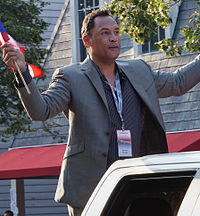
Roberto Alomar leads all second basemen with 10 Gold Glove Award wins.
The Gold Glove Award is the award given annually to the Major League Baseball players judged to have exhibited superior individual fielding performances at each fielding position in both the National League (NL) and the American League (AL), as voted by the managers and coaches in each league. Managers are not permitted to vote for their own players. Eighteen Gold Gloves are awarded each year (with the exception of 1957, 1985, 2007 and 2018), one at each of the nine positions in each league. In 1957, the baseball glove manufacturer Rawlings created the Gold Glove Award to commemorate the best fielding performance at each position. The award was created from a glove made from gold lamé-tanned leather and affixed to a walnut base. Initially, only one Gold Glove per position was awarded to the top fielder at each position in the entire league; however, separate awards were given for the National and American Leagues beginning in 1958.
Roberto Alomar leads second basemen in wins; he won 10 Gold Gloves in 11 years with three different American League teams. Ryne Sandberg has the second-highest total overall; his nine awards, all won with the Chicago Cubs, are the most by a National League player. Bill Mazeroski and Frank White are tied for the third-highest total, with eight wins. Mazeroski's were won with the Pittsburgh Pirates, and White won his with the Kansas City Royals. Joe Morgan and Bobby Richardson each won five Gold Glove Awards, and four-time winners include Craig Biggio (who won after converting to second base from catcher), Bret Boone, Bobby Grich, Orlando Hudson, Dustin Pedroia, and Brandon Phillips. Hall of Famers who won Gold Gloves at second base include Alomar, Sandberg, Mazeroski, Morgan, Biggio and Nellie Fox. (Full article...) -
Image 14

The 1879 Cleveland Blues baseball team
The Cleveland Blues were a professional baseball franchise that operated in the National League (NL), a "major" league, from 1879 until 1884. They were organized by businessmen William Hollinger, and J. Ford Evans in 1878 as the Forest Citys, and played a season as an independent team. The NL expanded from six teams to eight before the 1879 season, and the Forest Citys accepted an invitation to join the league. Evans became their president and stayed in that capacity until C. H. Bulkeley assumed the role in 1882. In their six seasons in the NL, the team never finished higher than third place in the standings. They played their home games in League Park.
For their first season in the NL, the franchise (now named the Blues due to their dark blue uniforms) employed Jim McCormick as the manager as well as the ace of their pitching staff. Cleveland did not fare well, winning just 27 games against 55 losses, with a league-low .223 batting average. The 1880 season was better, however, as the team increased its win total to 47 against 37 losses and a tie, McCormick winning a league-leading 45 of those victories. Over the next two seasons, the team changed the on-field leadership often; employing Mike McGeary and John Clapp as player-managers in 1881, and Fred Dunlap in 1882. The changes did not prove effective as the team was unable to finish higher than fifth place during that span. The team had their best record and highest win total in 1883 under manager Frank Bancroft. On September 13, 1883, Hugh Daily threw the franchise's lone no-hitter. (Full article...) -
Image 15Major League Baseball (MLB) is the highest level of play in North American professional baseball. Founded in 1869, it is composed of 30 teams. Each team in the league has a manager, who is responsible for team strategy and leadership on and off the field. Assisted by various coaches, the manager sets the line-up and starting pitcher before each game, and makes substitutions throughout the game. In early baseball history, it was not uncommon for players to serve as player-managers; that is, they managed the team while still being signed to play for the club. In the history of MLB, there have been 221 player-managers, 59 of whom are in the National Baseball Hall of Fame.[needs update]
The dual role of player-manager was formerly a common practice, dating back to John Clapp, who performed the task for the Middletown Mansfields in 1872. One reason for this is that by hiring a player as a manager, the team could save money by paying only one salary. Also, popular players were named player-managers in an effort to boost game attendance. Babe Ruth left the New York Yankees when they refused to allow him to become player-manager. Five of the eight National League (NL) managers in 1934 were also players. Connie Mack, John McGraw, and Joe Torre, among the all-time leaders in managerial wins, made their managerial debuts as player-managers. At least one man served as a player-manager in every major league season from Clapp's debut through 1955. (Full article...)
More did you know
- ... that Yoennis Céspedes was described by Baseball Prospectus as "arguably the best all-around [baseball] player to come out of Cuba in a generation"?
- ... that baseball outfielder Adam Eaton received USD $120,000 meant for the retired pitcher of the same name?
- ... that professional baseball player Bill Bagwell led three different leagues in batting average?
- ... that four men involved in the 1877 Louisville Grays scandal were banned from professional baseball for life?
- ... that Josh Bell received a US$5 million signing bonus, a record for a player chosen in the second round of the Major League Baseball Draft?
Sports portals
Selected picture
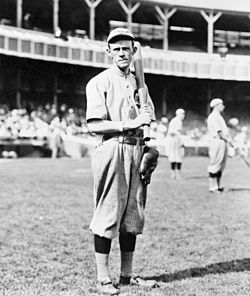
| Credit: George Grantham Bain Collection |
John Joseph Evers (July 21, 1883 – March 28, 1947) was a Major League Baseball player and manager. He was elected to the Baseball Hall of Fame by the Veterans Committee in 1946. He was born in Troy, New York. He is famously featured in the poem Baseball's Sad Lexicon along with teammates Joe Tinker and Frank Chance.
Associated Wikimedia
The following Wikimedia Foundation sister projects provide more on this subject:
-
 Commons
Commons
Free media repository -
 Wikibooks
Wikibooks
Free textbooks and manuals -
 Wikidata
Wikidata
Free knowledge base -
 Wikinews
Wikinews
Free-content news -
 Wikiquote
Wikiquote
Collection of quotations -
 Wikisource
Wikisource
Free-content library -
 Wikiversity
Wikiversity
Free learning tools -
 Wiktionary
Wiktionary
Dictionary and thesaurus









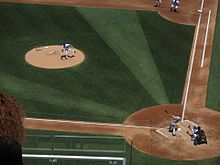





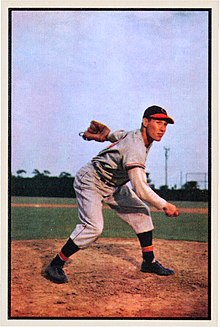

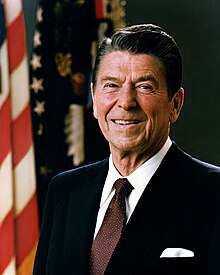
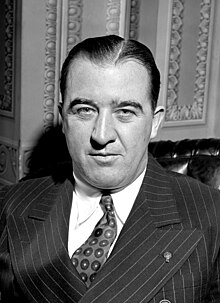
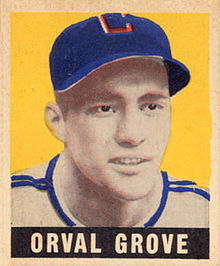
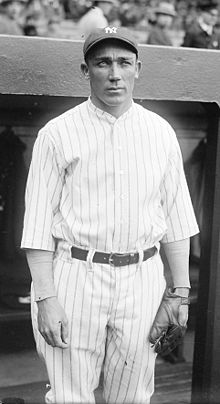
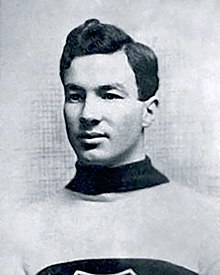











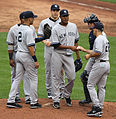

















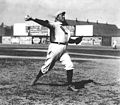







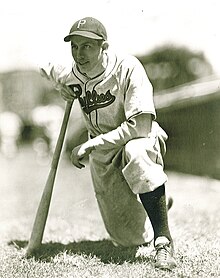

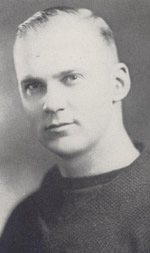
















You must be logged in to post a comment.